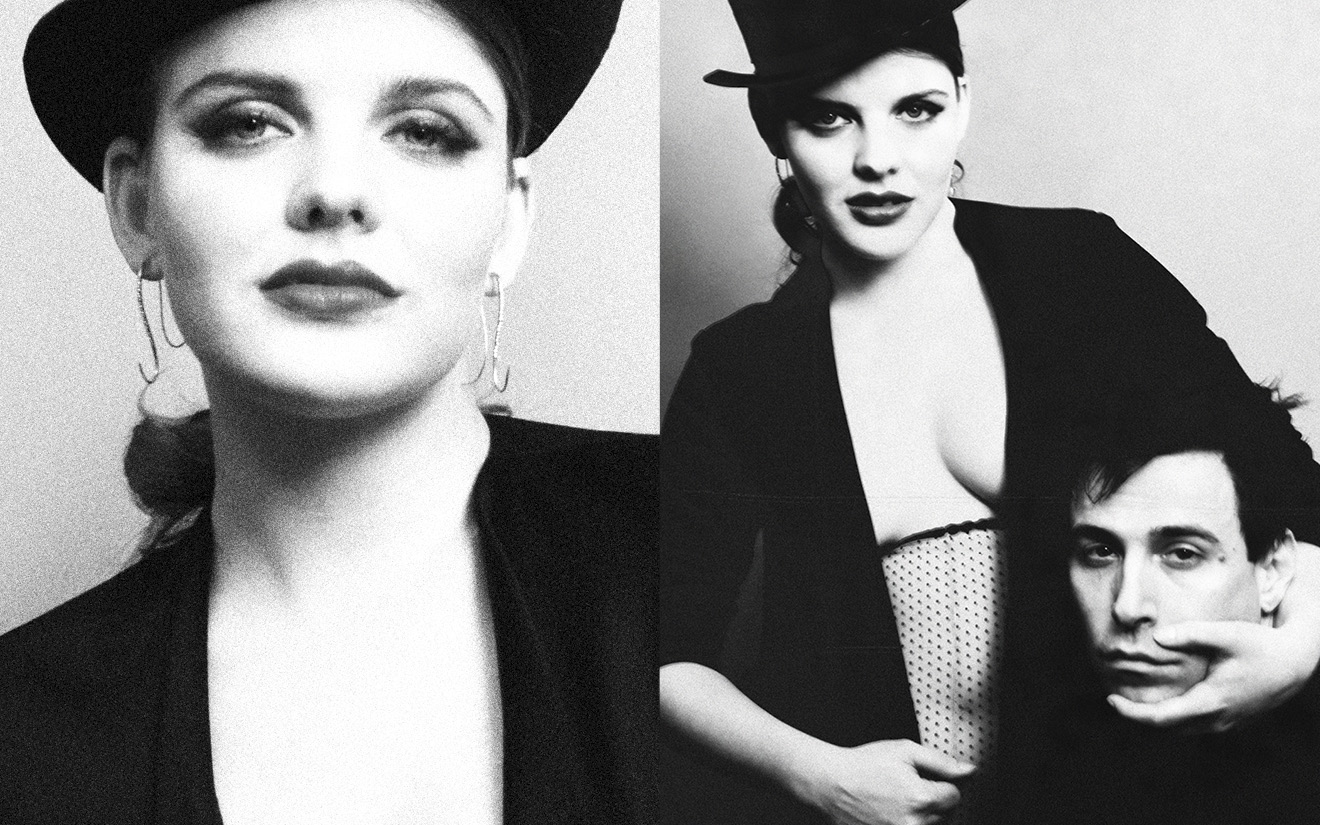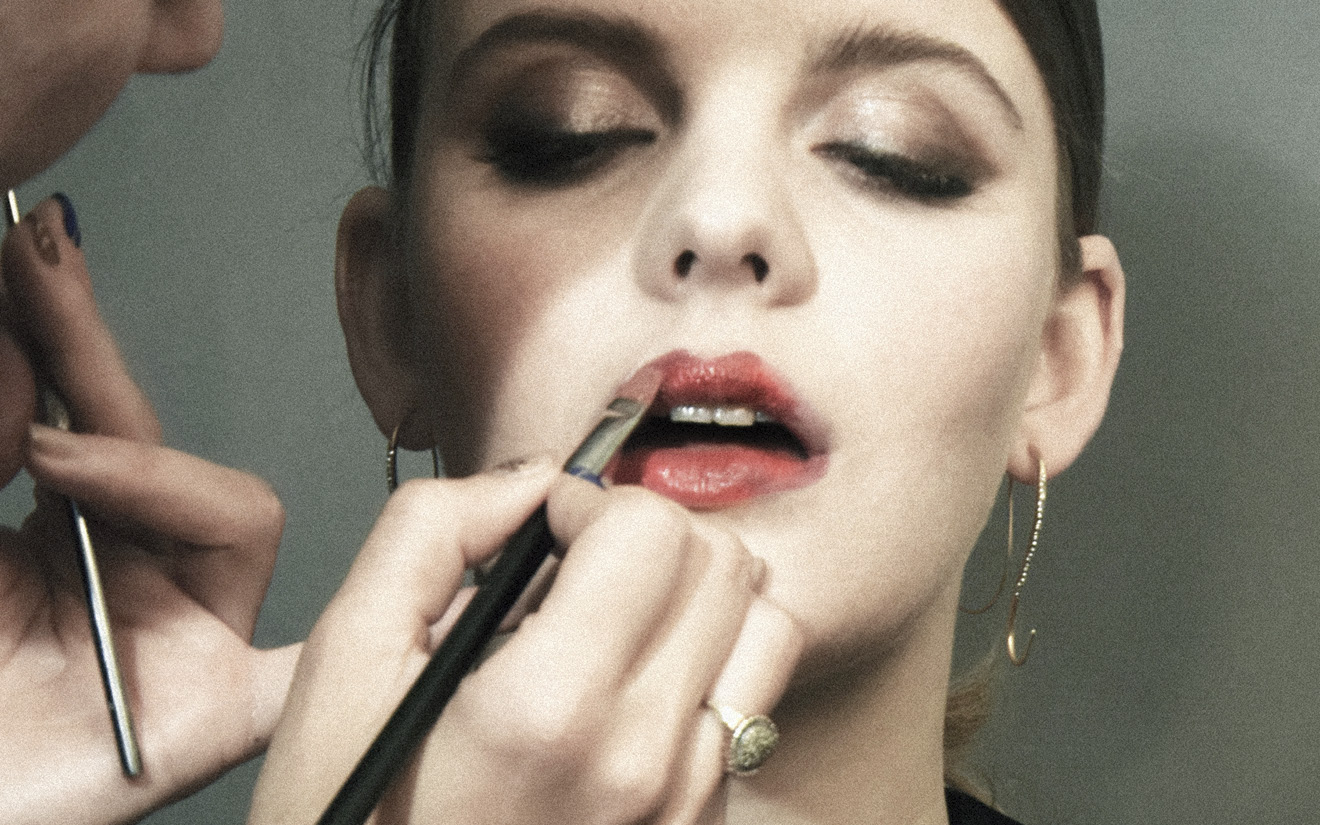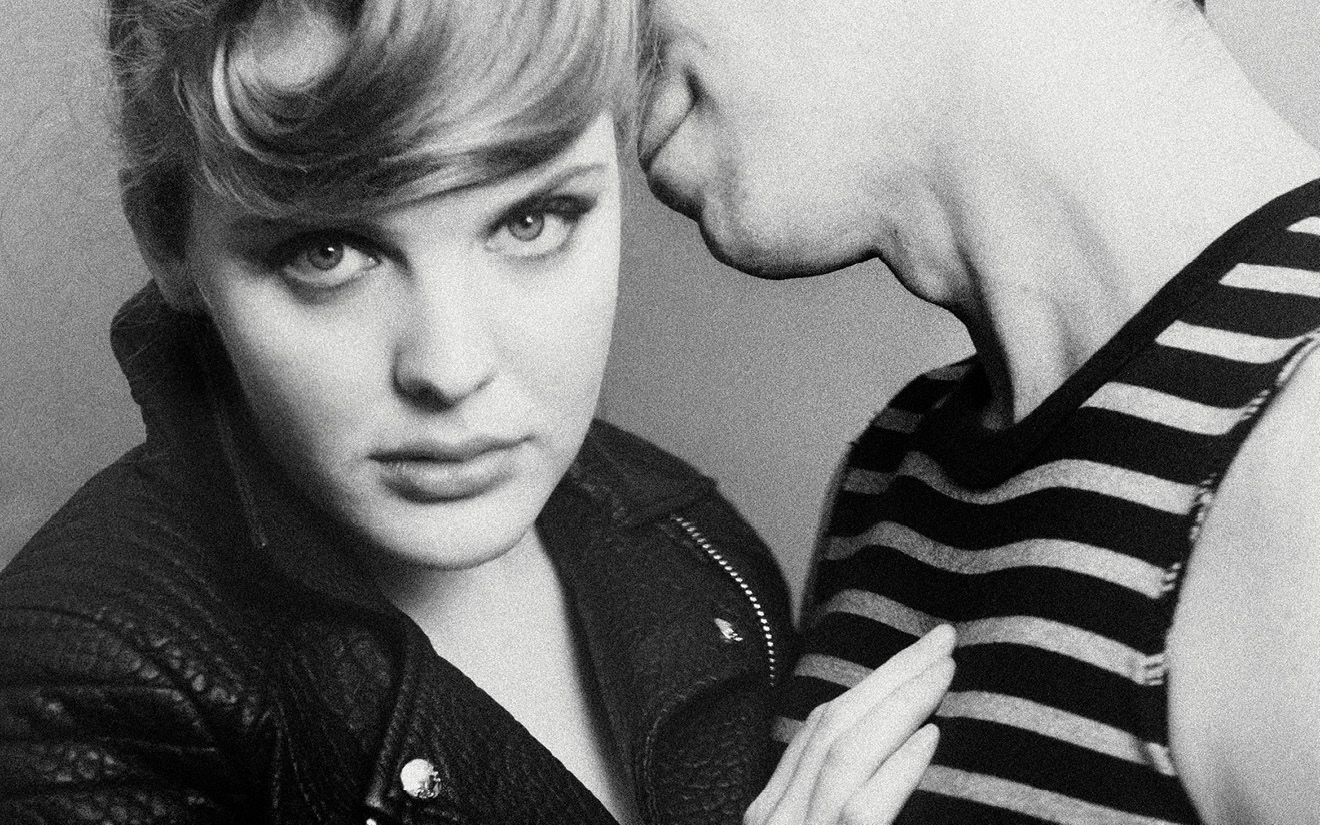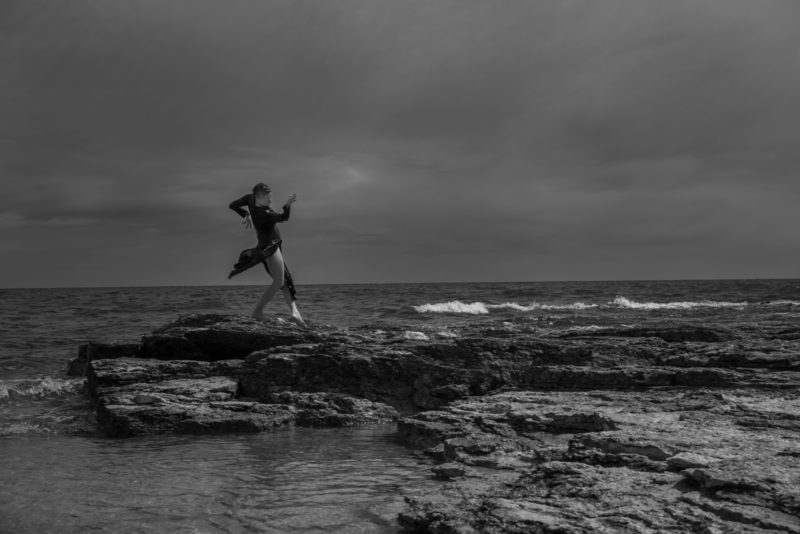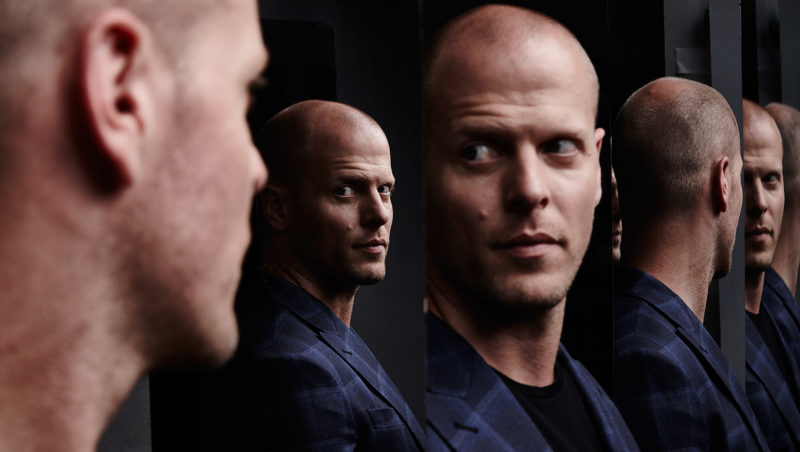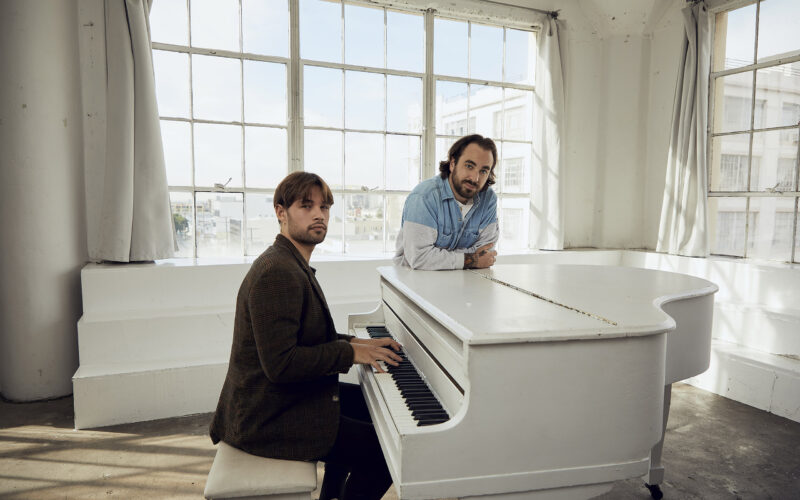Syrie Moskowitz appears on Broadway for the first time in an immersive performance of mystery and tragedy.

JOSEF RODRIGUEZ: What’s it like to be starring on Broadway for the first time? Are you nervous about any reactions or do you tend to be your own worst critic?
SYRIE MOSKOWITZ: Like most things I’ve done or achieved in life, it’s by sneaking through the back door. This is no exception, especially since the creator of the show, Cynthia Von Buhler, literally discovered this hidden Broadway gem of a theater by entering through a random black door left ajar at midnight while passing by. There is nothing classically “Broadway” about this show, with the exception of the location on 42nd Street. But, that’s just what I prefer: the risky, the avant garde, and the unusual pursuits in art, as well as life. As an artist, when you agree to a challenging or different project, you do it for yourself — not for any critics. To be clear, this is not Broadway. This show is an immersive experience within a long forgotten Broadway theater.
JR: Can you explain what the show is about, how you scored the role, and what the rehearsal process was like?
SM: The story follows Ziegfeld Follies girl, Olive Thomas, showing her rise from obscurity to wild fame as a silent film star and her tumultuous and passionate relationship with Mary Pickford’s wayward brother, Jack Pickford, played by Joey Calveri (recent star of Rock of Ages). Olive’s untimely and horrifying end is explored in different ways throughout the night. The show is truly an immersive experience for the audience who wanders through multiple times and worlds, created by sets, secret rooms, and actors. Think along the lines of “Sleep No More,” except set in a real historic place and time with real historical characters.
The rehearsal process was an intense learning experience. The show is richly layered, both on “stage” and off. Aerialists dangle from a huge crystal chandelier while singers share their souls on stage as Jack and Olive tear through the audience dancing through time, creating a stage anywhere they appear. My co-star, Joey Calveri, choreographed all of our moments of dance together and it’s been quite an experience working with him. Remember the scene in Dirty Dancing with Patrick Swayze and Jennifer Grey, where she stares at him, doe-eyed and oblivious, as he throws her around the room and chastises her for her posture? That’s us. One look at Joey’s hips during a performance and you’ll understand exactly what I mean. I don’t come from the Broadway world, so it’s been a crash course and I couldn’t have done it without him.
Another great experience has been working with Billy Butler, who composed five original songs for the show including the opening and closing songs, as well as the three different songs we perform alongwith to illustrate Olive’s death. His patience, clarity, and ability to work with an actor and feel out their performance while playing is a rare thing. He creates a freedom for emotion and writes beautiful and intelligently thought out music.
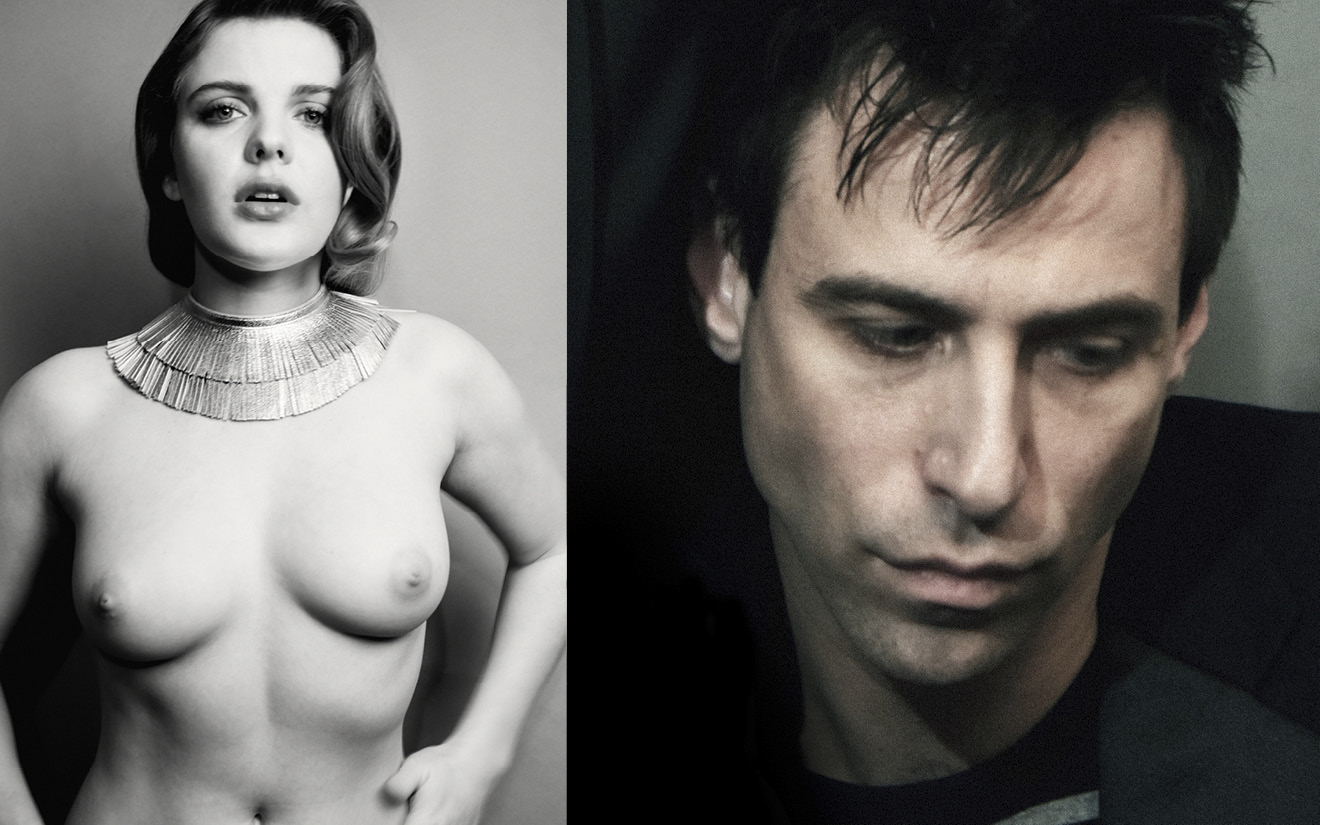
JOEY: “Mein” Blazer ALL SAINTS / Breton Striped Shirt H&M
JR: Do you find that the competitiveness of Broadway theater is an encouraging way to channel your energy, or do you ever feel drained by the constant fight for recognition in a city of millions?
SM: As someone that has always taken flight from their own wings, I’ve been lucky enough to avoid the struggle most actors face while trying to make it in NYC theater. Cynthia (von Buhler) was kind enough to let me be a part of the audition process, alongside her associate director Chris Fink, and mainstage choreographer for the show, Delysia LaChatte. The talent we witnessed was mind blowing and insanely humbling. When Erica Vlahinos (who plays our Fanny Brice) came out and sang for us, we immediately ordered margaritas as I swiped a tear from my cheek. Her voice is a powerhouse. As cliche as it sounds, New York is overflowing with the best talent from all over the world.
JR: What about the role connected with you and what steps did you take to give yourself the best chance during your audition?
SM: I’m one of the lucky few that got to hop over the audition process. I’m terrible in auditions and have blown 99% of them. When the show’s creator and director, artist Cynthia Von Buhler, contacted me about the role and said asked if I would be Olive, I jumped on it. I performed in one of her other immersive plays before, so we already had a solid working relationship, but beyond that, I felt such a kinship to Olive Thomas that I felt it a great honor to play her.
Olive was born poor to a steel working family in Pittsburgh, PA, but she was adventurous and had her sights set high. She had a spirit that was way before her time. When on set of her silent films, she would request to direct scenes. During that time, a female film director was comical, not just unheard of. She knew she was in a man’s world– think WW I and the suffragettes. Olive didn’t try to fight the system. Instead she tried to make her space within its constructs, manipulating what was accessible so she could be artistically satisfied, but never at the risk of hurting other people. She hated the idea of upstaging people. One day she dreamt of solely directing films. Sadly, this was never realized as she died very tragically at the young age of 25.
JR: What was it like growing up for you, traveling from place to place? I read that you and your mother sold antiques around the country, and that must have been quite an exciting youth.
SM: Yes my mother, Alexandra Walker Clark is, without a doubt, the biggest influence in my life. She’s an artist, novelist, and poet with a deep fetish for the antique aesthetic. I was brought into the world already placed in reverse time. Our houses were treasure troves, mansions with secret cupboards exploding with silver, lace, and crystal. Decadence of a different age. We were never rich and, often times, very very poor; however, we rarely felt it in the way we lived thanks to my mother’s ingenious “midas touch” to take the ramshackle and turn it into gold. My parents never placed much importance on a classical education, even though my father is a highly education ex-professor. They would forge doctors notes and take us out of school to go on a week long road trip to explore the secret sinkholes and caves of central Florida, driving back to town with the car so low to ground from all the weird furniture and trinkets my mother picked up in junk stores along the way. So many times in my life I hated my childhood and felt a sense of embarrassment wandering into a thrift store to try and find clothes that we could afford. Now in my adulthood, it is exactly that sensibility and ability to dig through garbage to find that one beautiful thing that I believe makes my style and aesthetic so unique.
JR: You’re also quite an accomplished photographer. What inspired you to go in front of and behind the camera?
SM: My great-grandfather, grandfather, mother, and father were all photographers. My father gave me my first camera when I was 12. It was an old Russian 35mm SLR. My mum, convinced I was too inept to deal with such a complicated apparatus, scoffed at it. Soon, rolls and rolls of film were being used and developed, and I got a job selling sunglasses on the street to start to pay for my addiction. Anyone I could get my hands on became subject, sticking peculiar objects on their heads and hiding them underneath rocks or hanging them from trees. At 15, I was, pure and simply, a wild child. I ran away from home in the middle of the night, much to my parents dismay. When they found me some weeks later living at a strange artist community in Georgia, they sequestered me to a sprawling, decrepit mansion they just purchased in the mountains of East Tennessee. Lonely, bored, and with very few friends, I started to use myself as a subject. It was simple things at first, the shadow of my hand on a wall that inspired me. It quickly grew into such a deep self exploration that I pursued it for 10 years.
JR: Many of your short films are featured on your website. What about directing is different from performing, writing, or even from photography? Would you ever consider directing a feature film?
SM: Directing is the way my intellectual intelligence feels satisfied. Performing is where my emotional intelligence feels explored. I absolutely love directing. I recently directed a big music video for the band Twin Danger, (jazz/rock love child of singer Vanessa Bley and sax player Stuart Matthewman of Sade). There were 65 people on set for a 14 hour day. The energy of controlling a scene and the release when you actually let it go and live its own life on camera is a really special moment. Being a director does not mean knowing everything. It means allowing the good people you bring into the project collaborate with you and lead you as much as you lead them.
When you direct something, you learn so much as a performer. Marlene Dietrich used to bring her own lenses to set to choose which angle, aperture, and distance of lens to shoot with. I bring a little of this into my work as an actor, but I also just love the release of letting go of all of that and just being a vessel for a character, as well as another director’s vision.
Yes — directing a feature film is assuredly in my cards, and I believe very soon. I have several projects in development.
JR: In terms of your fashion sense, do you often wear the clothes you model outside of your shoots, and do you ever find yourself experimenting with the growing and dying trends in the fashion industry?
SM: Everyday is another opportunity to be a different character in my own life, and I use clothing and fashion to explore that. I have accidentally found myself oscillating in the fashion world, but it is not what I call home even though I respect it. Being the shape I am, I always find myself loving classic lines, silks, and patterns. I adore vintage gowns and wear them frequently even to throw my garbage outside. Every moment is an opportunity to explore the exuberance of life. When I see a designer who’s work I love then, I love it. If I don’t like it, I don’t notice it. I never get caught up on the who’s who.
JR: What are some of your favorite cameras to shoot with and why?
SM: My favorite camera to shoot on is my 1970s, heavy-as-an-ox, Nikromat camera – mainly for sentimental reasons. My mother always used to photograph with this camera and, when I got my own, it immediately became a soul mate. I was doing a photo-documentary project in Lebanon some years back and I dropped it on a rock near the beach in the south of the country. Despondent, I went to local cafe for a tea. The proprietor mentioned that he loved film and had a camera store near by with a lens for the camera and he would love to gift it to me. We met him after he got off work and followed him via car into the hills of the country, where Hezbollah has its stronghold and had been blown to bits during the siege of 2006. I was so very unsure of what I was doing and why I put trust in such a situation. Part of me thought I was about to be kidnapped. The promised 2 kilometers quickly turned into 15, 20, 30, 40, deeper and deeper into their territory. At last, in the distance, I saw a crooked twisted old Kodak sign. As promised, the man brought us two strangers proudly inside his ramshackled store and fished out the lens– the lens I still use today.
JR: When doing a photo shoot, what kind of things do you look for in a photographer, both in terms of his or her style and the behavior exhibited on set?
SM: Vivacity, understanding of light and shadows in a meaningful way, idiosyncrasies that make them as a person and as an artist unusual, and kindness.
JR: Many people wouldn’t hesitate to call you a beautiful person, but what does beauty mean to you, both internally and externally?
SM: I was given a beautiful face, something I didn’t earn or work for: it’s a gift. What you do within yourself as a human, both bad or good, ends up reflected on that face. Even the most perfect visage can crumble from years of mean-spiritedness.
The show (Ziegfeld’s Midnight Frolic) opens on a barren stage. A dirty old lady in torn clothes and a missing tooth throws herself onto the stage and takes the spotlight. She begins to address my character, Olive, the beautiful young showgirl, telling of her misery and poverty. She was once a showgirl and it’s obvious how far she fell from grace. The actress playing this down and out lady, Heather Bunch, is a remarkably beautiful woman. Watching her physical transformation into this character and allowing herself to access the externally ugly, yet remaining wise and internally beautiful (and funny) is inspiring to watch.
JR: Is there anywhere in the country that you’d like to visit that you haven’t had a chance to yet?
SM: I was just in Cambodia for New Years and fell in love with South East Asia. Myanmar (formerly known as Burma) is next on my list.
JR: You seem to be very comfortable with your body and exposing it on camera. How do you feel about the generally prudish nature of American culture when it comes to talking about and showing sex or nudity?
SM: I have always felt a natural comfortability with my body in both a sexual and non-sexual capacity. I think it’s because I’ve explored what this means so much through my early self-portraits. For me, sexuality is most effective on people when it’s both beautiful along with a sense of humor or style. Americans are bewildering — they find a piece of string covering a nipple acceptable, even though it’s actually more degrading of women then simply admiring the naked shape of a woman.
For the Whitney Biennial Gala a few years back, I was asked to arrange life models for the attendees to draw upon arrival. I got eight of the most incredible muse friends of mine, men and women, to participate. Halfway through the gala, they were asked to cover up. The girls were furious. We felt such a strength in our nudity and did not want to feel others’ shame projected on us, but we did what we were requested. The next day, I read an article in the Times stating that the “extremely young girls” were exploited and halfway through the event “begged” to cover up. The women I hired were livid — two of them were mothers and hardly considered young girls. But that’s the game in America– find whatever angle to present something negative as positive or something positive as negative to get your story or to make something “trend.”
I honestly don’t think one civilization has gotten it right since the Ancient Greeks. In addition to photographers, I also adore modeling for painters, and do so as often as I can. There is so much freedom there to inspire another artist with your body.
JR: Where do you see yourself going next? Geographically, in your career, spiritually, wherever you think the most change will come from.
SM: I see myself continually moving forward. There has always been a cord attached to me pulling me through life. Often times their is fog and I can’t see a damn thing, but I keep moving forward. I definitely see more theater in my future, as well as working on publishing a book of my self portraits, curated by artist David Salle.
I’m also planning a trip Europe later this summer to work on a top secret and exciting film project. I hope to take a visit to the Ritz Hotel in Paris, where Olive Thomas took the poison that fatally killed her. I want to pay my respect to someone who has inspired and changed my life so much.
There is a beautiful quote about Olive from her first husband that resonates so strongly that I feel it was written about me.
“Half of her wanted the real things of life, and the other half wanted the glitter of a make believe world.”
